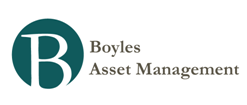Hedging and the 1988-1990 Japanese stock market
Interesting lesson/piece of history, from Seth Klarman’s book Margin of Safety:
“In the best of all worlds, an investment that has valuable hedging properties may also be an attractive investment on its own merits.
By way of example, from mid-1988 to early 1990 the Japanese stock market rose repeatedly to record high levels. The market’s valuation appeared excessive by U.S. valuation criteria, but in Japan the view that the stock market was indirectly controlled by the government and would not necessarily be constrained by underlying fundamentals was widely held. Japanese financial institutions, which had become accustomed to receiving large and growing annual inflows of funds for investment, were so confident that the market would continue to rise that they were willing to sell Japanese stock market puts (options to sell) at very low prices. To them sale of the puts generated immediate income; since in their view the market was almost certainly headed higher, the puts they sold would expire worthless. If the market should temporarily dip, they were confident that the shares being put back to them would easily be paid for out of the massive cash inflows they had come to expect.
Wall Street brokerage firms acted as intermediaries, originating these put options in Japan and selling them in private transactions to U.S. investors. These inexpensive puts were in theory an attractive, if imprecise, hedge for any stock portfolio. Since the Japanese stock market was considerably overvalued compared with the U.S. market, investors in U.S. equities could hedge the risk of a decline in their domestic holdings through the purchase of Japanese stock market puts. These puts were much less expensive than puts on the U.S. market, while offering considerably more upside potential if the Japanese market declined to historic valuation levels.
As it turned out, by mid-1990 the Japanese stock market had plunged 40% in value from the levels it had reached only a few months earlier. Holders of Japanese stock market put options, depending on the specific terms of their contracts, earned many times their original investment. Ironically, these Japanese puts did not prove to be a necessary hedge; the Japanese stock market decline was not accompanied by a material drop in U.S. share prices. These puts were simply a good investment that might have served as a hedge under other circumstances.”
- Notes From The Pabrai Funds Chicago Annual Meeting
Update on the Japanese Net-Net: The Pabrai funds invested in a basket of Japanese net-nets starting October 2010. Pabrai has exited all the positions with a realized gain of 2.2% including dividends, or 1.4% annualized. To me, this is surprising as the...
- Loeb Says Japan Rally In Early Stages
Thanks to Will for passing this along. Add hedge-fund manager Daniel Loeb to the list of big-name investors making bullish bets on Japanese stocks. Loeb, who scored big gains on Greek debt over the past year, said Japanese leaders are making progress...
- Look To The East For Cheap Yield – By Merryn Somerset Webb
This brings me to one of my favourite long-term investments – what many readers insist is my “blind spot” and a market that no one has used the word “bubble” to describe for over two decades. I’m talking about Japan, of course (full disclosure:...
- What Is Margin?
Using margin is a topic that I understood the very basics of but not enough to be able to try and use. I hope this primer will help you out because I know it aided in my understanding. My main goal for using margin would be to sell more put options,...
- Selling Puts For Added Income
After running some numbers and making my first transaction in selling puts yesterday with my BAC Jan 17 2014 Put, I've come to believe that selling puts could prove profitable with certain moves. This strategy would require much more capital than...

